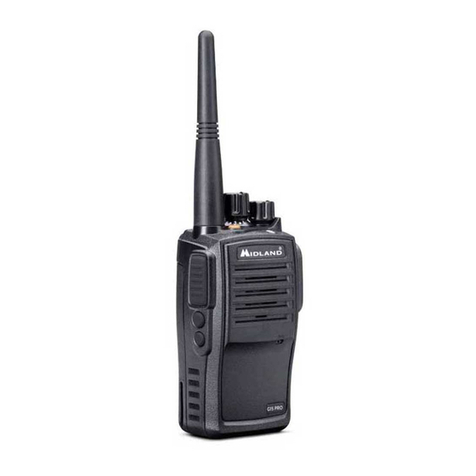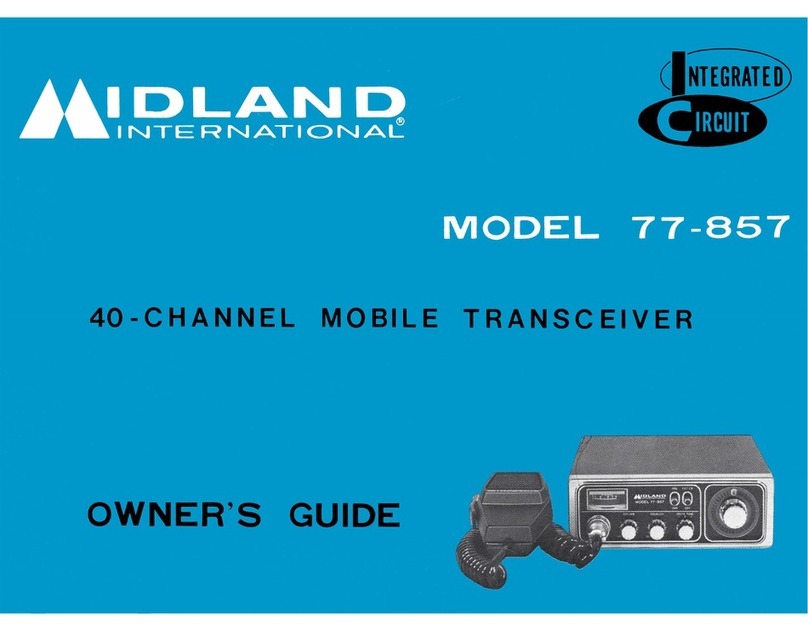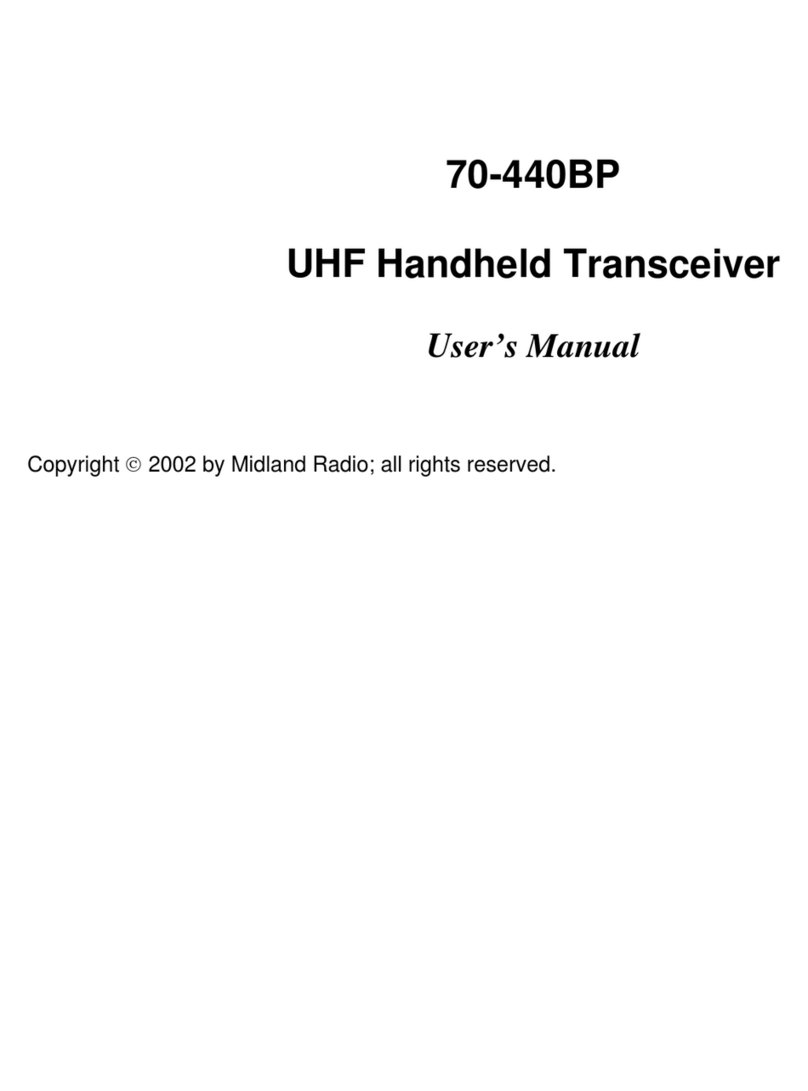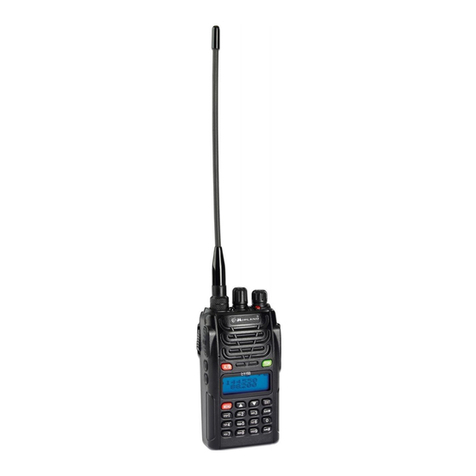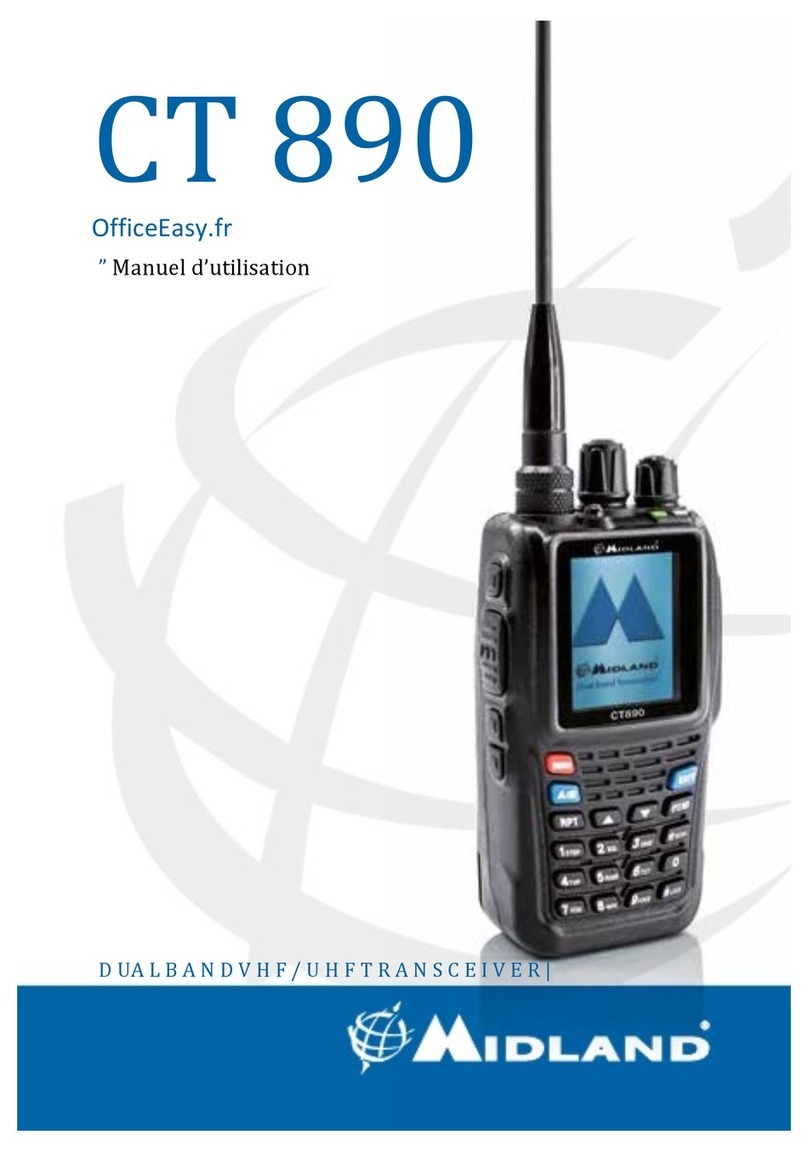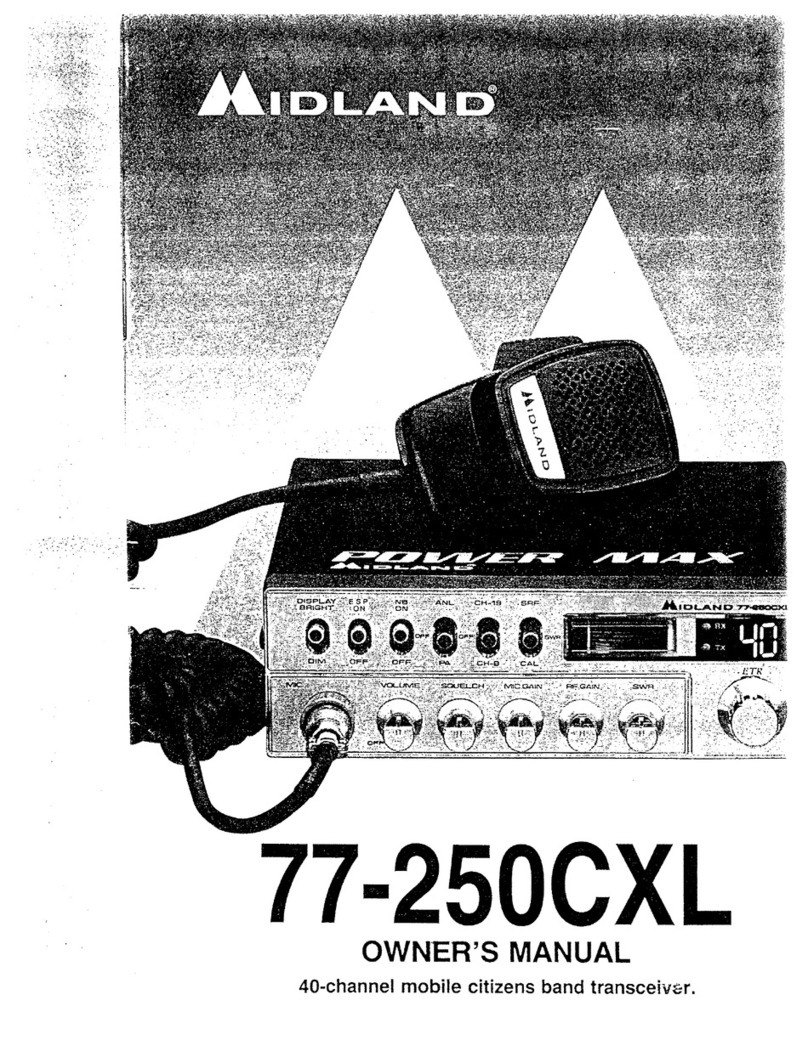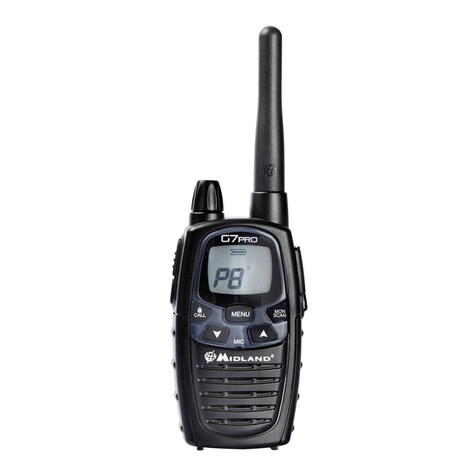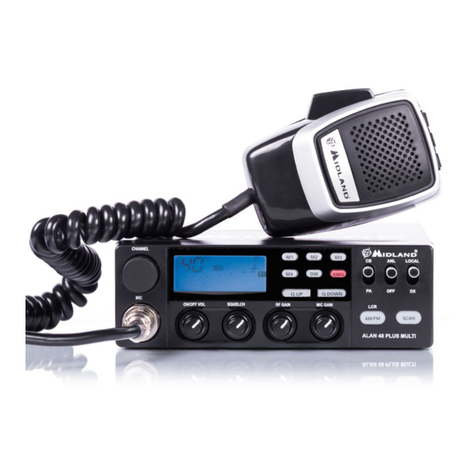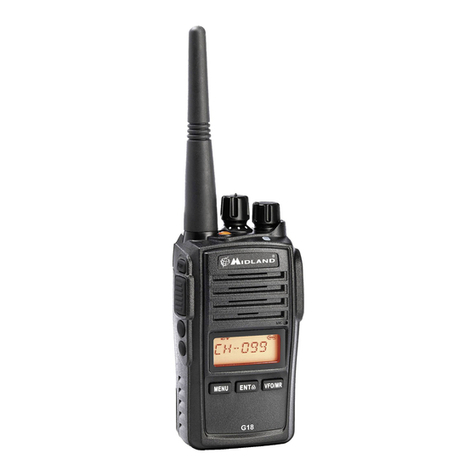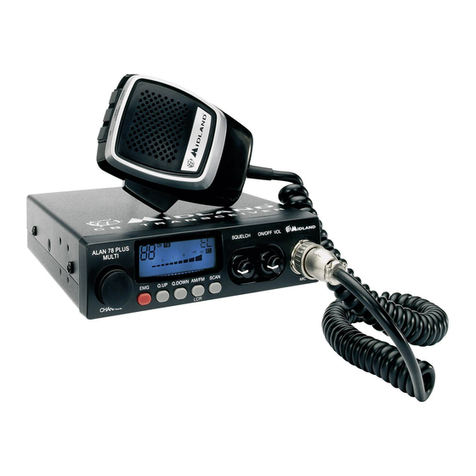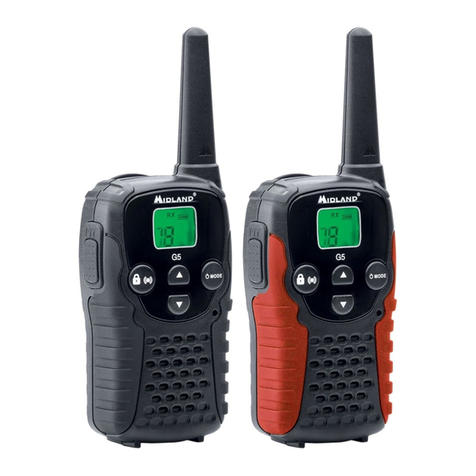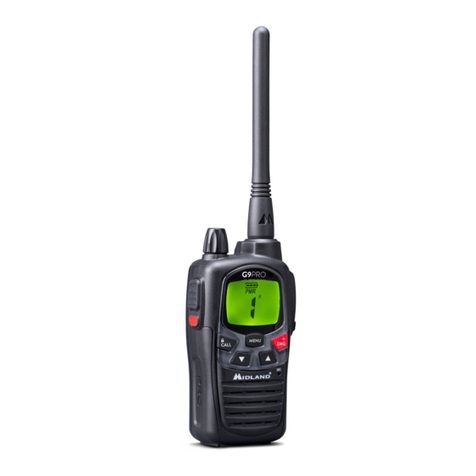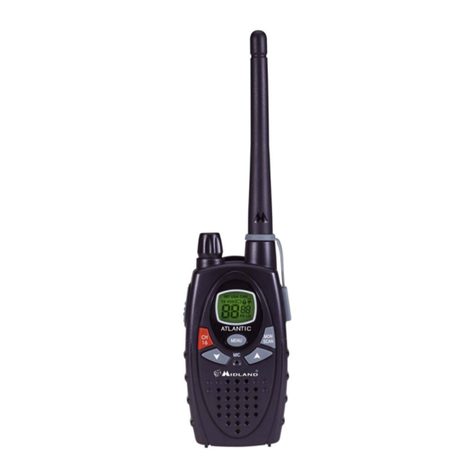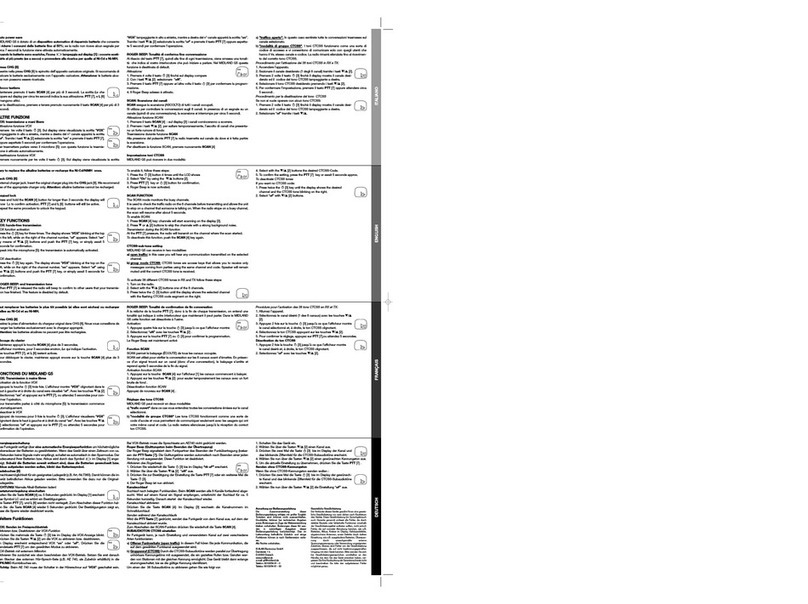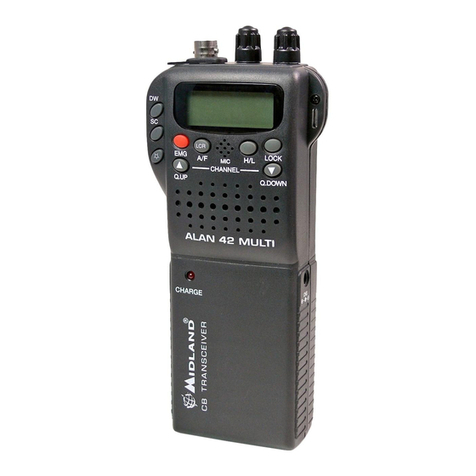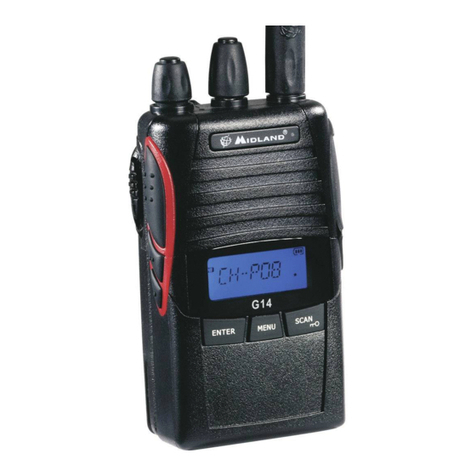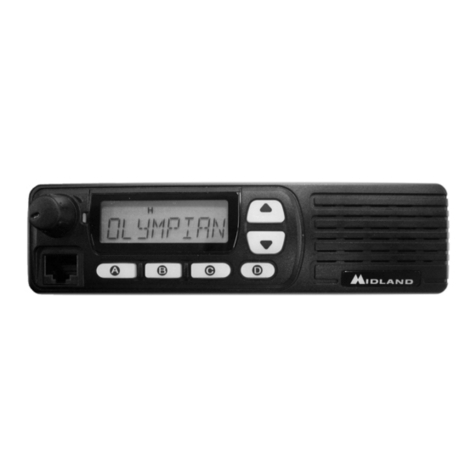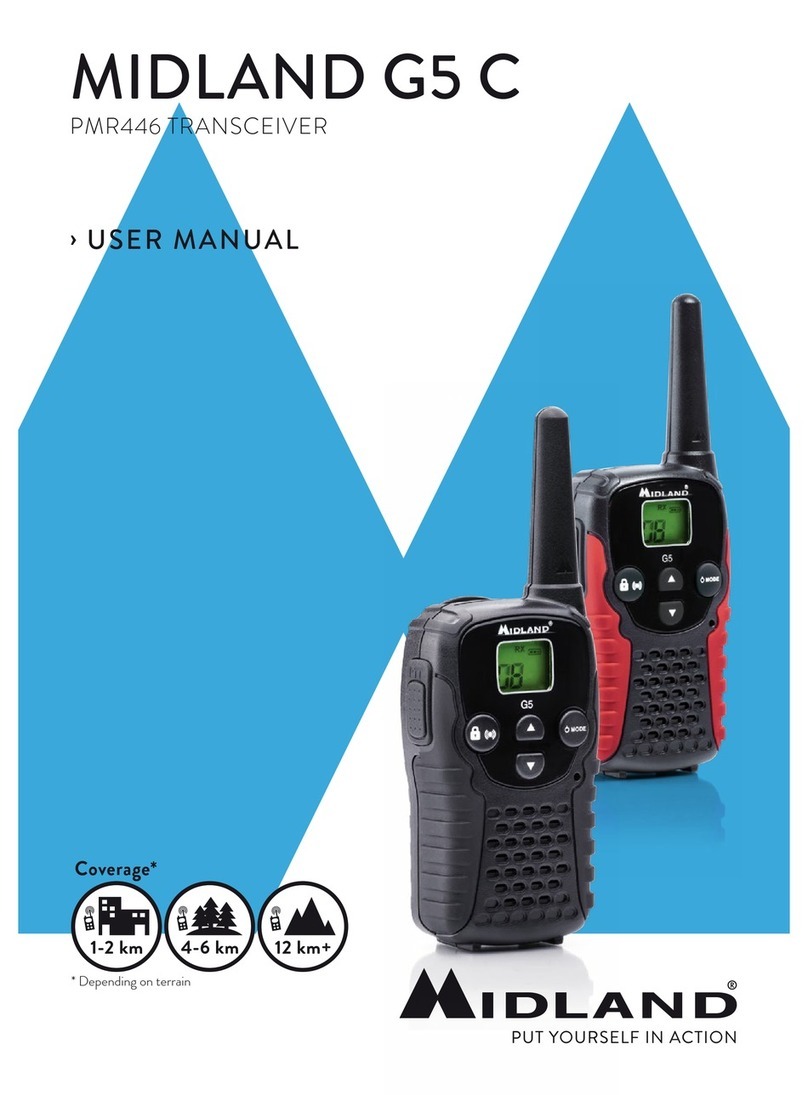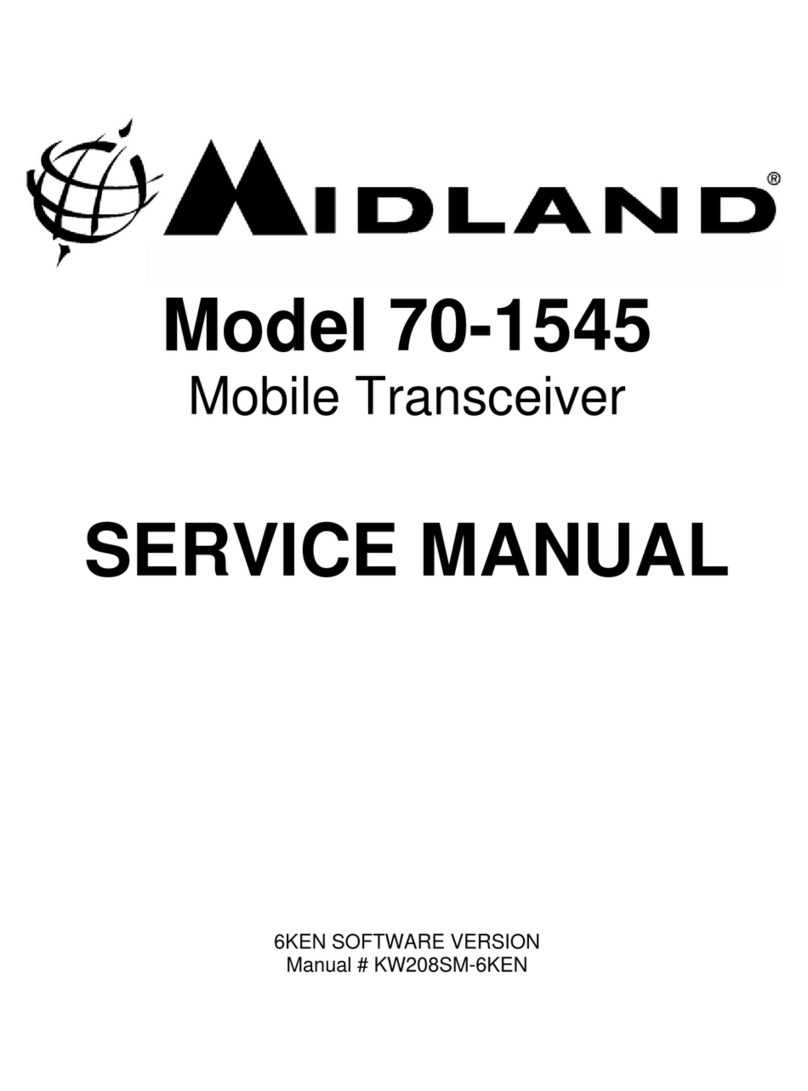
3
ENGLISH
1 INTRODUCTION
Congratulations on choosing Ocean! Your handheld marine transceiver
was designed as a high-quality, robust, and reliable marine radio, using
the latest technology available. Ocean ensures secure transmission and
reception on all VHF marine channels, as required by the Internatio-
nal Telecommunications Union (ITU). Your transceiver is composed of
the highest-quality electronic components, conforms to EN 301 178-
2, CE/99/05 regulations, and is water resistant (splashproof), ensuring
clear, reliable communication for many years. Ocean is equipped with
a microprocessor, which controls not only the marine band tuning, but
also many advanced functions such as Dual Watch and memory chan-
nels. The following are the principal features of your transceiver:
• PLL (Phase Locked Loop) synthesizer circuit – for precise and
stable channel selection.
• Large, back-lit LCD display – constantly displays Ocean’s parame-
ters and settings. The backlighting enables you to view the screen in
case of little environmental light.
• Automatic squelch– while in standby, this function automatically
eliminates bothersome background noise.
• Automatic Power Saver – saves energy when in standby, prolon-
ging battery life.
• Recall button for Channel 16 – for instant access to channel 16 (the
universal marine channel for emergency contact).
• Channel scanning – automatically searches for marine band chan-
nel signals.
• Dual Watch – for monitoring of radio traffic on two channels simul-
taneously.
• VOX (Voice Operated eXchange) – activates transmission when
the user begins speaking. When used with optional microphone ac-
cessories, this feature enables the user to operate hands-free, clip-
ping the transceiver to a belt.
• Call button – briefly sends the transceiver into transmission mode,
generating audio call tones.
• Clock and chronometer – enables the user to view the current time
on the LCD display and to use the transceiver as a chronometer that
is precise to the hundredths of a second.
• High/low power selection – reduces transmission power in short-
distance communication, allowing Ocean to save energy and redu-
cing the risk of interference.
• Multifunctional bar indicator– in reception mode, this function in-
dicates the incoming signal strength using a series of bars. In tran-
smission mode, it indicates the output power.
• Battery level indicator – constantly displays the battery level.
• Keypad lock – locks the transceiver keypad to avoid the accidental
activation of buttons or settings.
• 20 memories – for storing, rapid recall, and scanning of your 20
most-used channels.
• Power is supplied through 4 normal AA batteries – the (optional)
batteries can be either rechargeable or alkaline, for maximum flexibi-
lity of use and operating cost.
• Sockets for speaker, microphone, and battery charger (SPK,
MIC CHG) – these sockets enable the use of various microphone
accessories (headphone, microphone/speaker, etc), as well as the
use of an optional standard “MW904” wall battery charger.
• 20 private channels – using the optional PRG-OCEAN program,
you can program 20 channels within the VHF marine band.
The manufacturer, with its effort to constantly improve product quality,
reserve the right to change characteristics and features without prior
notice.
